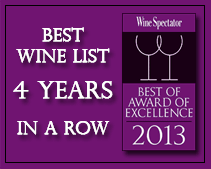Chianti Steps Out of Its Straw Skirt
July 26, 2011
Philippines Wine Shop Clark Wine Center is pleased to share with you articles, news and information about wine, wine events, wine tasting and other topics related to wine and the appreciation of wine.
The Chianti region in the hills of Tuscany is the spiritual home of the sangiovese grape. With its black cherry and violet aromas, its earthy mineral flavors, its lively acidity and its sometimes dusty tannins, sangiovese speaks directly from the Italian soul.
Skip to next paragraph
Multimedia
Wines of the Times: ’04 and ’05 Chianti ClassicosMultimedia Feature
Wines of the Times: ’04 and ’05 Chianti Classicos
Related
Pairings: Lentils With Merguez (February 20, 2008)
At least that’s the idea. Unfortunately it has rarely worked out that way. Like a family constantly at odds, Chianti has seldom been able to present a unified face to the world, except, alas, for those straw bottles that were once emblematic of Italian wine.
A good deal of Chianti’s troubles have been self-imposed, as Italian wine bureaucrats have veered wildly in the past 40 years trying to define and redefine what makes a Chianti, generally at the expense of sangiovese.
Nonetheless, the greatness of the sangiovese grape is winning out. In a tasting of 25 bottles from the Chianti Classico territory, the heartland of the Chianti region, the wine panel found many satisfying bottles. The good ones seemed to speak not only of the grape itself but of the Tuscan hills where sangiovese vines flourish as they do in few other places in the world.
For the tasting Florence Fabricant and I were joined by Charles Scicolone, wine director at I Trulli restaurant, and Gabrio Tosti di Valminuta, proprietor of De Vino, a largely Italian wine shop on the Lower East Side.
It’s not often that the wine panel is of one mind, but we all agreed on how much we enjoyed these wines.
“I picked up the glass and smelled it and said, This is sangiovese,” Charles said afterward, and Gabrio echoed his thoughts: “My mouth was tingling, and that’s Tuscany.”
Not that all the wines were alike. A few were clearly New World in style, with aggressive flavors of vanilla and oak from being stored in small barrels of new wood. We eliminated these, as they lacked any sense of regional identity.
A few more were eliminated because they tasted too much of international grapes like cabernet sauvignon, syrah or merlot, all legal in Chianti yet pointless in excess, unless the idea is to eliminate what makes these wines distinctive.
All on the panel would probably have said they liked traditional Chiantis best, but really, with Chianti, traditional is a meaningless word.
It has generally been a blended wine, made primarily of sangiovese but also with several other red grapes and even some white ones. In fact, the father of Chianti, Baron Bettino Ricasoli, who codified Chianti production methods in the mid-1800s, called for as much as 30 percent white grapes like trebbiano and malvasia.
More than a century later, as the rest of the wine world was modernizing its viticulture and cellar techniques, Italian bureaucrats clung to the old ways, enforcing the formula despite the large number of thin, unpleasant wines being produced.
In the 1970s many serious Tuscan winemakers began to direct their best efforts elsewhere, making wines with grapes or blends unsanctioned by the bureaucracy. These wines came to be known as super-Tuscans, and while some showed what Tuscany could do with cabernet sauvignon and the international grapes, others demonstrated what could be done only with sangiovese.
One of these was Sergio Manetti of Montevertine, in the heart of the Chianti Classico region, who was so disgusted with the rules of Chianti that he simply withdrew from the denomination.
Today, I might consider Montevertine the greatest Chianti Classico producer of all, except that it still does not call its wines Chianti, even though the current rules would let it.
The rules have changed frequently in the last 30 years. Since 2006, Chianti Classico has had to be at least 80 percent sangiovese. The remainder can be made up of indigenous grapes like canaiolo and colorino, or international varieties like cabernet, syrah or merlot.
Obviously, that leaves a lot of room for variation: a Chianti Classico can be 100 percent sangiovese, or it can contain 20 percent cabernet, which can dominate the sangiovese. But no longer can it contain white grapes.
SOURCE: http://www.nytimes.com/2008/02/20/dining/20wine.html?_r=1&ref=tuscany
Clark Wine Center was built in 2003 by Hong Kong-based Yats International Leisure Philippines to become the largest wine shop in Philippines supplying Asia’s wine lovers with fine vintage wines at attractive prices. Today, this wine shop in Clark Philippines offers over 2000 selections of fine wines from all major wine regions in the world. As a leading wine supplier in Philippines, Pampanga’s Clark Wine Center offers an incomparable breadth of vintages, wines from back vintages spanning over 50 years. Clark Wine Center is located in Pampanga Clark Freeport Zone adjacent to Angeles City, just 25 minutes from Subic and 45 minutes from Manila.
Wines from Burgundy, Bordeaux, Rhone, Loire, Spain, Portugal, Germany, Austria, Alsace, USA, Australia, New Zealand, Italy, South Africa, Chile and Argentina etc. are well represented in this Clark Wine Shop.
For more information, email Wine@Yats-International.com or visit http://www.ClarkWineCenter.com
You can skip to the end and leave a response. Pinging is currently not allowed.





